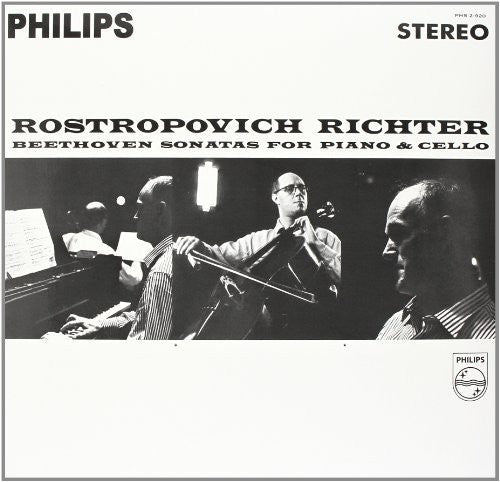Beethoven / Rostropovich / Richter: Sonatas for Piano & Cello

Beethoven / Rostropovich / Richter: Sonatas for Piano & Cello
Format: VINYL LP
On average, orders containing available-to-ship items are processed and dispatched within 1-2 business days, although this is not guaranteed.
Orders containing preorder items will ship as 1 fulfillment once all items in the order are available to ship.
Please note, Tower Records Merchandise and Exclusives are dispatched separately. On average, these items take 3-4 business days to dispatch, although this is not guaranteed.
The estimated shipping times that are displayed at checkout are from the point of dispatch.
See our shipping policy for more information.
We have a 30-day return policy, which means you have 30 days after receiving your item(s) to make a return.
To be eligible for a return of an unwanted item, your item must be in the same condition that you received it and in its original packaging.
In the unfortunate situation that a product is damaged/faulty/incorrect, let us know and we will endeavor to correct any issue as soon as possible.
Please see our refund policy for more information.
Artist: Beethoven / Rostropovich / Richter
Label: Speakers Corner
Product Type: VINYL LP
UPC: 4260019713704
Genre: Classical
Possessing a complete recording of Beethoven's Cello Sonatas gives far more satisfaction than merely having the set to fill the shelves. On the one hand it offers one the opportunity to compare Beethoven's art of composition at various stages in his life. And on the other hand one can already recognize in the early Opus 5 how he breaks with the traditional sonata in which the solo instrument merely provides an accompaniment and treats the two instruments as equal partners in the creation of the movements. Richter and Rostropovich devote themselves to their task with verve and freshness. The two early works are marked by the rich and full sound of the cello and an elegantly performed piano part, while the two Russian musicians foster a contemplative, introverted style in the a major Sonata. This respectful approach also lends itself well to the C major Sonata where the free, fantasia-like character with wide-ranging shading is shown off to advantage. Beethoven's break with the traditional sonata-form layout is carried to extremes in the D major Sonata, where the cello ignores the powerful theme on the piano in the first movement. The work's brittleness is effectively revealed by the two musicians in the transition from the sensitive Adagio to the austere, freely worked final Fugato, while their resolute and analytical approach to the work and technical prowess on their instruments is highly rewarding
Tracks:


